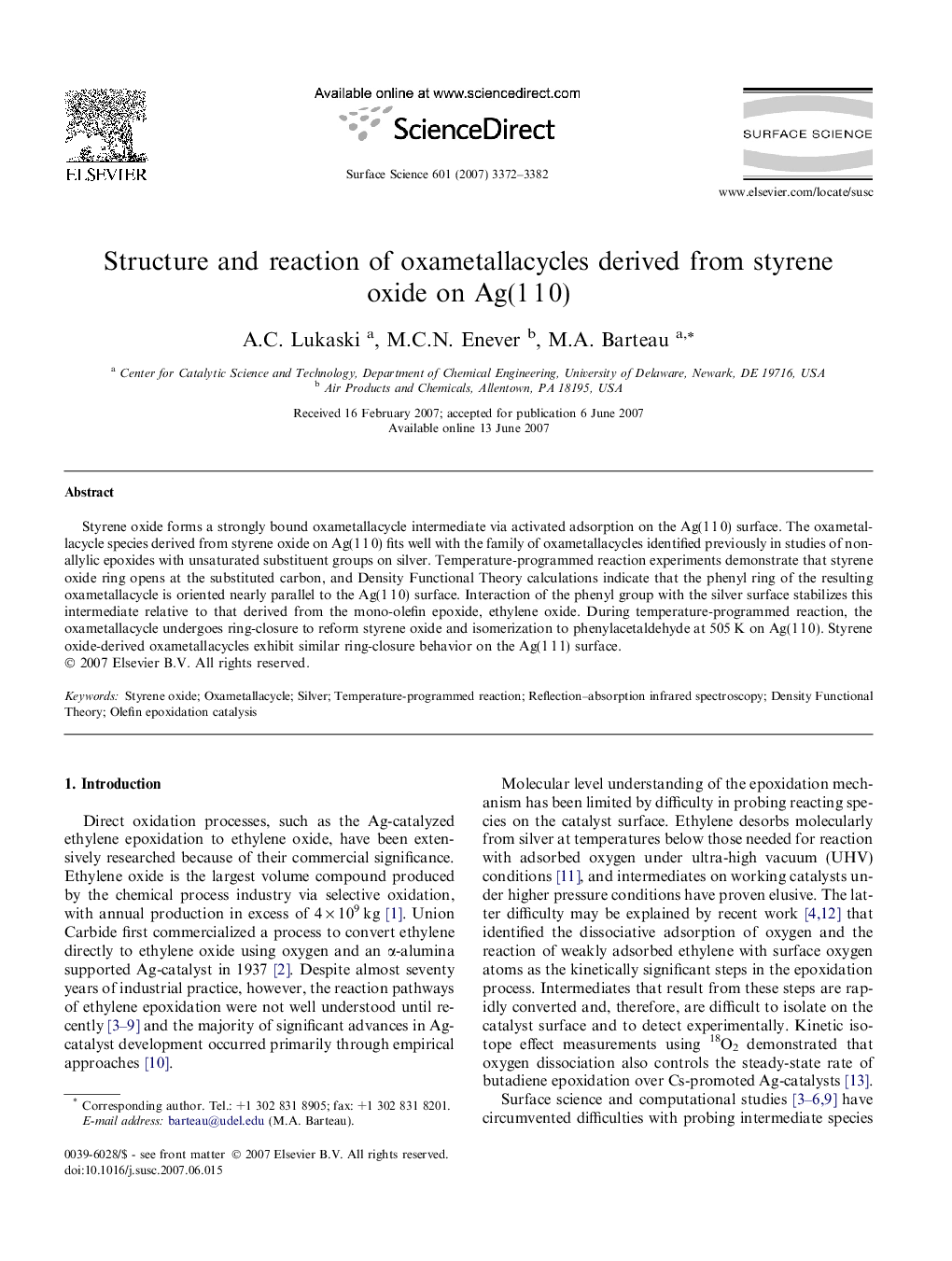| Article ID | Journal | Published Year | Pages | File Type |
|---|---|---|---|---|
| 5425864 | Surface Science | 2007 | 11 Pages |
Styrene oxide forms a strongly bound oxametallacycle intermediate via activated adsorption on the Ag(1Â 1Â 0) surface. The oxametallacycle species derived from styrene oxide on Ag(1Â 1Â 0) fits well with the family of oxametallacycles identified previously in studies of non-allylic epoxides with unsaturated substituent groups on silver. Temperature-programmed reaction experiments demonstrate that styrene oxide ring opens at the substituted carbon, and Density Functional Theory calculations indicate that the phenyl ring of the resulting oxametallacycle is oriented nearly parallel to the Ag(1Â 1Â 0) surface. Interaction of the phenyl group with the silver surface stabilizes this intermediate relative to that derived from the mono-olefin epoxide, ethylene oxide. During temperature-programmed reaction, the oxametallacycle undergoes ring-closure to reform styrene oxide and isomerization to phenylacetaldehyde at 505Â K on Ag(1Â 1Â 0). Styrene oxide-derived oxametallacycles exhibit similar ring-closure behavior on the Ag(1Â 1Â 1) surface.
